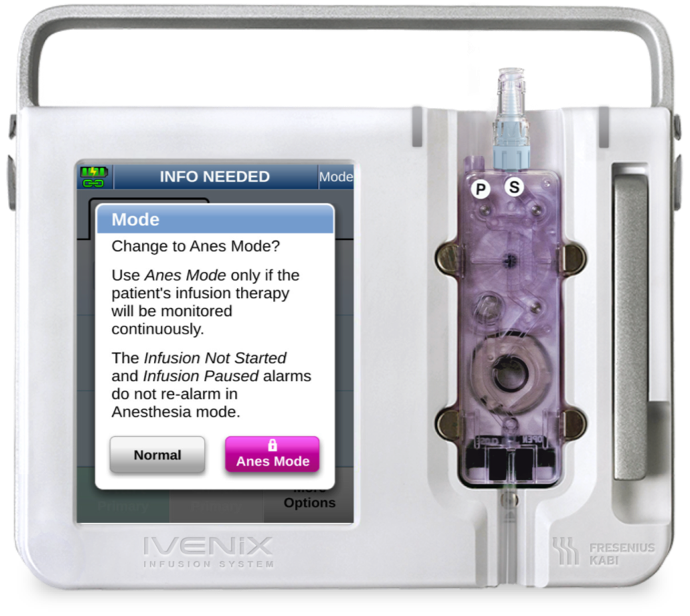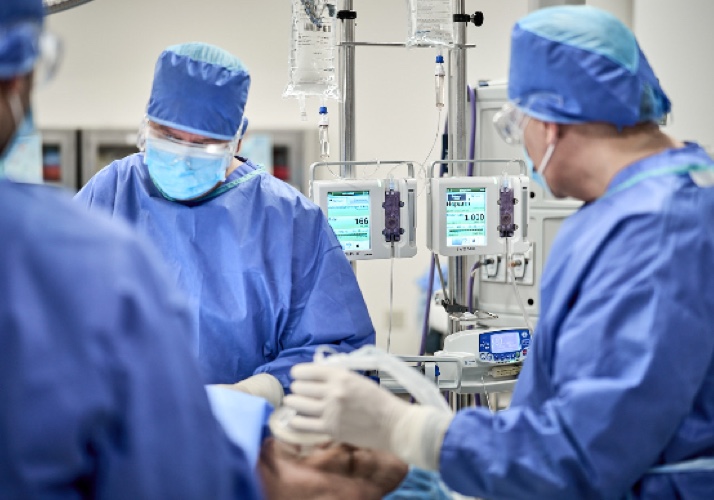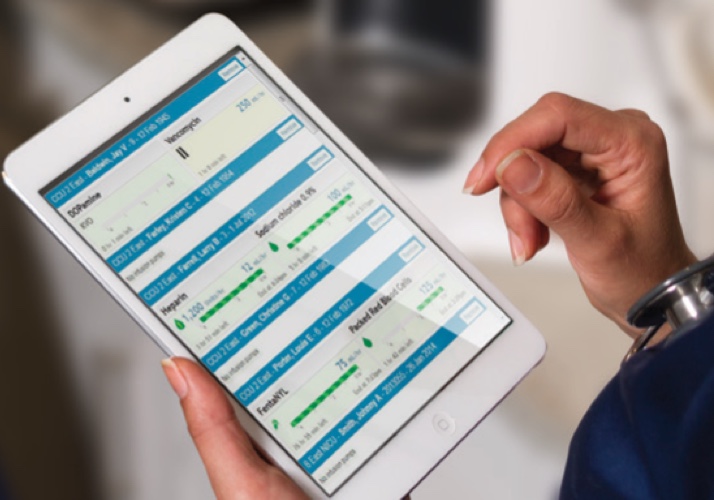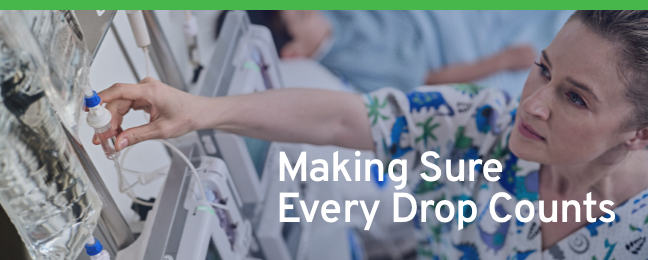Designed for You
Anesthesia Professionals
Engineered for Ease of Use
Designed for You
Main Menu
Ivenix is designed to help clinicians focus on patients, not the pump.

Guided workflows and Anesthesia mode
- Measures and adjusts flow regardless of pump position, bag height, patient movement, environmental factors, or fluid viscosity with consistent delivery and accuracy regardless of the IV tubing material or IV catheter size.*1
- Guided workflows with fewer menus to navigate and no modules that may cause mix-up.1
- Anesthesia mode† restricts use to anesthesia professionals with the mode status clearly displayed on the touchscreen.1
- Anesthesia mode extends the interval between alarm sounds to be less intrusive.1
- Only drugs meant for anesthesia are available to the anesthesia professional. Nurses don’t have access.

Designed to help clinicians focus on patients
- Information is sent to the optional Infusions Dashboard and the EMR to empower decision-making at the beside.1
- Analytics tools provide insights to help streamline infusion practice.1
- Next-generation drugs and processes are supported by immediate, remote drug library updates.1

Optional Infusions Dashboard provides on-the-go access
- Mobile views of actively running infusions facilitate cross-team collaboration and can help improve patient surveillance during multi-location supervision.1
- Rapid, unique, clinician log-in capability can help enhance security and customizes the experience.1
- Pump notices (e.g., alarms) can be seen on mobile devices or forwarded to alarm notification platforms/systems.1
*Overall accuracy +/- 5% under the following conditions: 0.5-1000 mL/hr; 5°C to 35°C ambient temperature; 10 PSIA-15.5 PSIA ambient pressure; -100 mmHg to 525 mmHg backpressure; +/- 24” inlet head height; viscosities up to 70% dextrose solution; up to 96-hour duration; microbore and macrobore sets.
†Anesthesia mode should only be used in an environment where an operator is continuously present. Unplugging the LVP from an AC power source for more than one minute will automatically take the LVP out of Anesthesia mode.
Please see full list of warnings and cautions associated with this device.
Resources for Anesthesia Professionals
Product brief and brochure
Featured Ivenix Insights
The Ivenix Nurse Workflow
In a recent podcast discussion, Alberta Guy, a product consultant at iatricSystems, and Wendi Denham, an independent clinical strategist, explored the impact of auto-programming smart ...
Making Sure Every Drop Counts
Smart infusion pumps are hailed as a breakthrough in infusion technology, promising accuracy, safety, and efficiency. However, an important question remains: are patients receiving the ...
What happens to smart pumps in a network outage or cyberattack?
The Ivenix Infusion System is designed to support patient-focused features when the EMR and network are unavailable. Multiple safety features are still accessible to help ...
Get to know the Ivenix Infusion System firsthand
Ivenix Infusion System Large Volume Pump (LVP) Instructions for Use. Bad Homburg, Germany: Fresenius Kabi; 2023.


